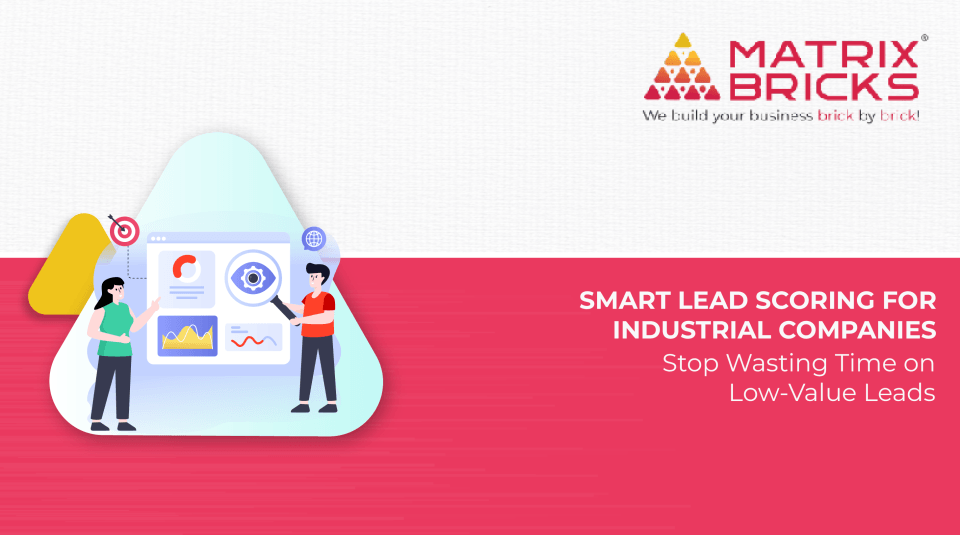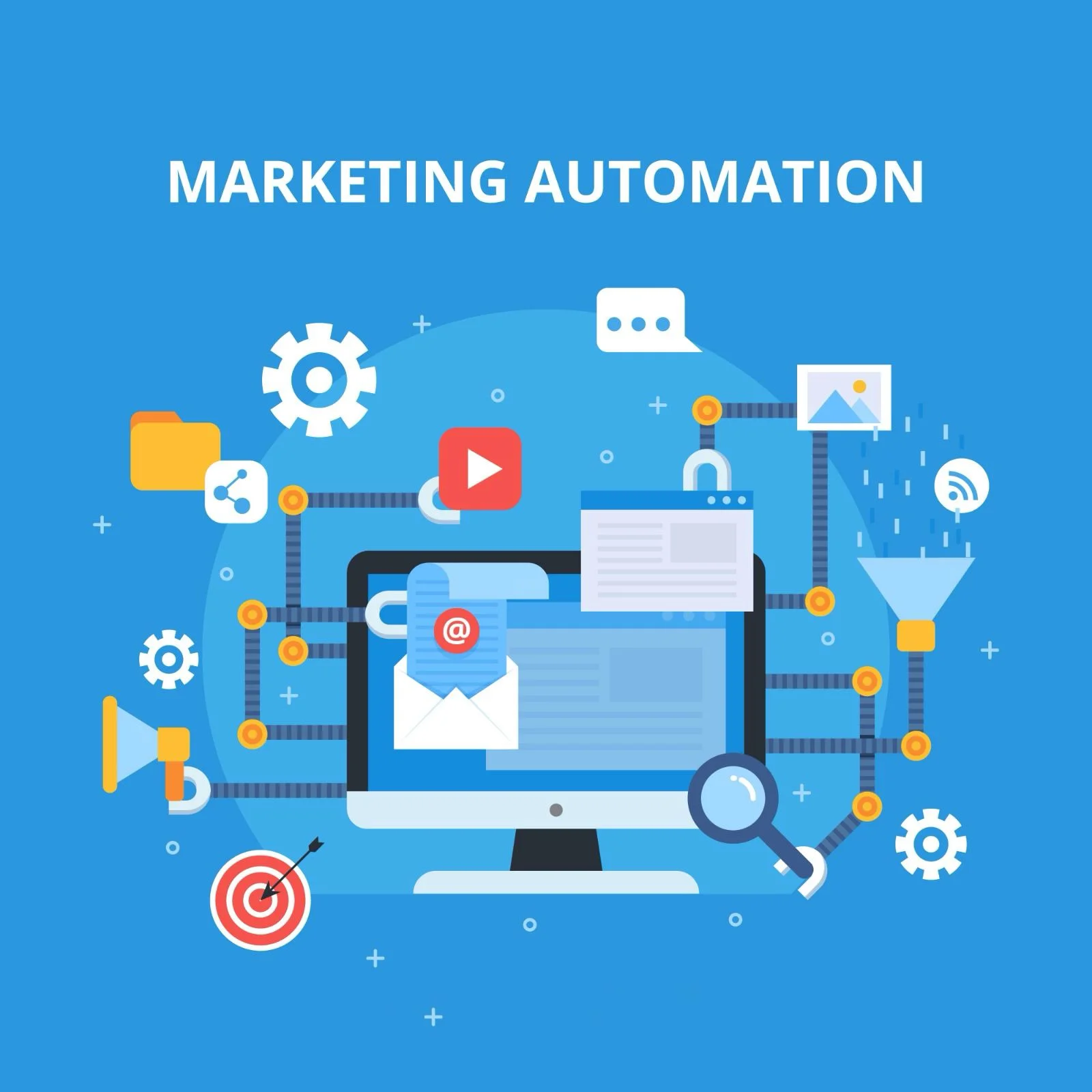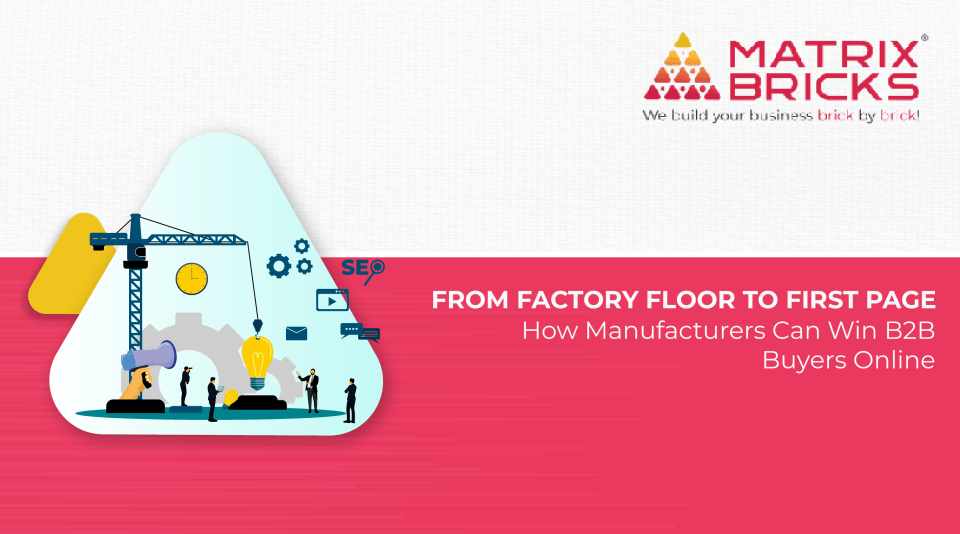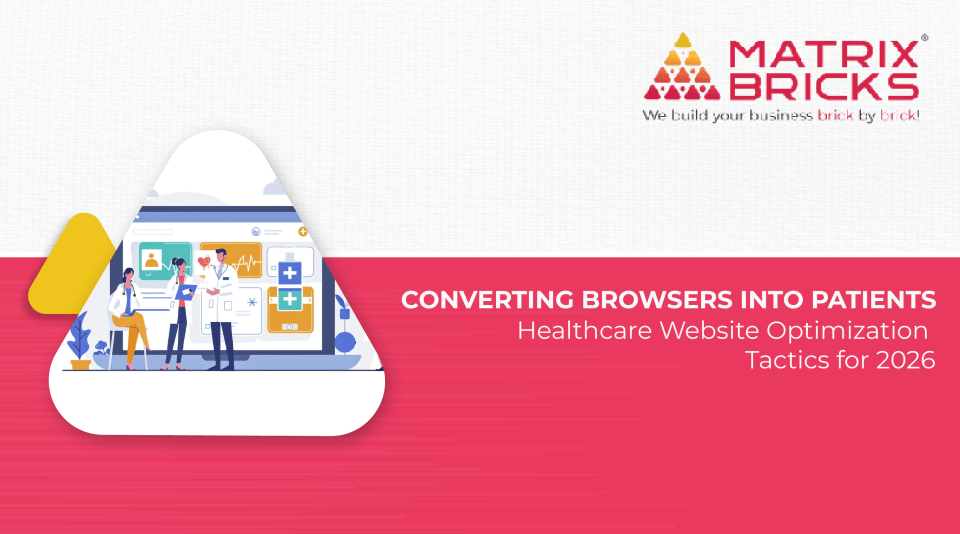
If you run or market an industrial business, you already know this: The buyer’s journey is slow, complex, and full of ghost leads.
Someone downloads a data sheet but never replies.
Someone views your product page ten times but never books a demo.
Someone fills out your form, but turns out to be a college student writing a research paper.
And yet your team wastes hours chasing them.
Poor lead qualification is one of the biggest reasons industrial companies lose sales momentum. And as we move toward 2026, one trend is becoming painfully clear:
Manufacturers are struggling more than ever to distinguish between researchers and serious buyers.
This is where smart lead scoring, powered by better data, better systems, and better alignment, becomes a complete game-changer. Whether you call it B2B lead scoring, industrial CRM intelligence, or marketing automation for manufacturing, the idea is simple:
Spend more time on prospects who are ready to talk.
Stop chasing leads that were never real in the first place.
Let’s break down how this works and how you can transform the way your industrial team prioritises leads.
Defining High-Intent Industrial Leads
Industrial buyers don’t behave like typical B2B SaaS or retail customers. Their buying cycles are long, technical, committee-driven, and often involve multiple rounds of research. So, the real challenge is identifying intent, not just interest.
A website visit does not necessarily equal buying intent.
A form fill doesn’t equal budget approval.
A brochure download doesn’t equal urgency.
High-intent leads show patterns—not isolated actions.
How do high-intent buyers usually behave?
Here’s what typically separates serious buyers from passive researchers:
- They revisit key high-intent pages, such as pricing, configurators, RFQ forms, or technical spec pages, indicating they are evaluating solutions, not just browsing.
- They engage with content linked to decision-making, such as implementation guides, buyer checklists, or ROI tools, showing they want clarity before committing.
- They respond to outreach across multiple touchpoints, including email, LinkedIn, or calls, proving they’re willing to talk, not just collect information.
- They ask technical questions or request customised information, which means they’re past general research and nearing vendor comparison.
Red flags that signal a low-value lead
Not every lead deserves equal effort. Recognising early signs of low intent saves time:
- They only engage with top-of-funnel content, such as blogs or eBooks, without deeper activity that suggests moving down the funnel.
- Their email domain is generic, or they share incomplete information, signalling they may be researching, not purchasing.
- They interact once and disappear, suggesting their interest was casual or accidental.
Adding context with real-world examples
Consider a manufacturer of industrial valves: A lead downloads a specification sheet but never returns to review it. That’s likely a researcher or competitor. On the other hand, a lead that compares multiple valve models, downloads CAD drawings, and requests a quote clearly signals high intent.
Industrial companies need to move beyond simple engagement metrics and examine behavior patterns over time. That’s where technology comes in.
Using CRM + Analytics for Scoring
Industrial selling is becoming more data-driven every year, and the most efficient companies are now using industrial CRM systems plus analytics to track buyer behaviour automatically. This is where B2B lead scoring becomes measurable instead of subjective.
Instead of a salesperson guessing which leads are “good,” the CRM assigns a score based on actions, firmographics, behaviour, and intent signals.

Key factors that go into a smart lead-scoring model
A modern industrial CRM helps you combine several categories:
- Firmographic data, such as industry, company size, geography, and potential deal value, ensures you prioritise companies that match your ideal customer profile.
- Behavioural signals like product-view frequency, RFQ submissions, or visits to your pricing page that show escalating interest.
- Engagement history across email, webinars, LinkedIn, events, and calls, highlighting who is truly paying attention.
- Technographic or equipment-based indicators that reveal a company’s current setup and need for upgrades or replacements.
Why analytics matter so much
Even the best CRM can only do so much without the support of analytics. When analytics tools connect with your CRM, you see patterns such as:
- Which pages do high-value customers view before purchasing
- How long do they take between touchpoints
- What content shifts them from research mode to buying mode
These insights allow industrial teams to predict buying cycles, optimise outreach, and focus only on leads that are likely to convert.
Additional tips for effective scoring
- Weight actions differently: Not every activity should carry the same score. A quote request should weigh more than a blog download.
- Review scoring periodically: Buying behaviour evolves, especially in industries with long cycles. Update your model quarterly.
- Segment by buyer persona: Engineers, procurement managers, and executives interact differently; score them separately.
Aligning Marketing and Sales for Better Handoffs
Even with a great scoring model, industrial companies still struggle with one major bottleneck:
The handoff between marketing and sales.
It’s common to see marketing teams drowning in low-quality leads while sales teams complain they’re not receiving anything valuable.
But the truth?
Lead scoring only works when both teams agree on what “sales-ready” actually means.
How to improve alignment without friction
Here are ways marketing and sales can unify around lead scoring:
- Agree on a shared definition of an MQL and SQL, so the scoring model clearly reflects when a lead is ready to move to sales.
- Create a feedback loop, where sales inform marketing which leads were strong, weak, or mismatched, helping the scoring model evolve.
- Use the same dashboard, ensuring both teams rely on identical data instead of isolated spreadsheets or assumptions.
- Set up monthly alignment meetings, where both sides evaluate performance, discuss new patterns, and update scoring rules.
Why alignment matters more in manufacturing
Industrial buying cycles involve:
- longer evaluation phases
- more technical questions
- more stakeholders
- more documentation and approvals
Because of this complexity, a misaligned handoff can delay deals by weeks—or kill them entirely.
Smooth handoffs ensure that:
- Sales teams focus on leads that actually matter.
- Marketing teams know exactly what to nurture.
- No lead gets lost in the gaps.
Automating Lead Nurturing with AI
Even after identifying high-intent leads, not every ready-to-buy customer converts immediately. Industrial buyers often pause because of budget approvals, internal discussions, or project timing.
This is where AI-powered nurturing, combined with marketing automation for manufacturing, dramatically boosts conversion rates.
AI doesn’t replace human conversation, but it makes your outreach smarter, faster, and more personalised.
How AI helps industrial companies nurture leads
AI improves your lead nurturing by:
- Monitoring buyer behaviour in real time, allowing you to re-score leads based on their evolving engagement.
- Sending timely, personalised follow-up messages, keeping your brand top-of-mind without overwhelming your sales reps.
- Predicting which leads are most likely to convert, letting your team prioritise outreach based on conversion probability, not guesswork.
- Triggering automated workflows, such as email sequences, alerts, or targeted content recommendations.
What AI doesn’t do, and why that matters
A lot of industrial teams fear automation because they believe it will replace relationship-building.
But AI doesn’t automate closing.
It automates context.
Your salespeople still manage conversations, demos, pricing discussions, and technical consultations.
AI simply ensures they spend that time with the right people.
Real-world example: AI in action
Imagine a lead downloads a CAD file.
In most companies, that’s the end of the story.
With smart automation:
- The CRM instantly assigns a higher score to the lead.
- AI checks whether they visited any other product pages.
- A personalised follow-up message is triggered.
- Sales gets notified if behaviour continues.
- The system monitors whether the lead returns within 72 hours.
This level of responsiveness would take hours manually, and most teams don’t have that time.
Additional Insights for 2026: Why Smart Lead Scoring Will be Critical
Looking ahead, industrial companies will face rising challenges:
- Increasing competition in niche markets
- Buyers are relying more on online research than on sales interactions
- More stakeholders are involved in purchasing decisions
- Longer evaluation cycles and delayed approvals
Smart lead scoring allows companies to stay proactive rather than reactive. By predicting which leads are ready and nurturing them intelligently, your team can close more deals faster and avoid wasting resources on unqualified prospects.
Tips for maximising ROI with lead scoring
- Integrate multiple data sources: Combine CRM, website analytics, and event participation data to build a complete profile of each lead.
- Score leads by engagement AND firmographics: A small company actively engaged may be less valuable than a large enterprise with moderate engagement.
- Continuously refine the model: As your business evolves, buyer behaviour changes. Recalibrate your scoring regularly.
- Personalise nurturing workflows: Use AI to deliver content and touchpoints that align with each lead’s stage and role in the decision-making process.
What Separates High-Value Leads from Low-Value Ones
| Lead Type | Key Indicators | Typical Outcome |
| High-Value, High-Intent Lead | Visits pricing pages, requests quotes, and engages with technical resources | Often converts within a predictable time frame |
| Researcher / Student Lead | Downloads guides but avoids product or pricing pages | Minimal-to-zero conversion likelihood |
| Early-Stage Industrial Buyer | Opens emails, attends webinars, explores product categories | Requires nurturing before reaching sales |
| Unqualified Lead | Generic email, no commercial relevance, unclear interest | Should be deprioritised to save time |
Frequently Asked Questions
1. What is lead scoring in Industrial Marketing?
Lead scoring is the process of ranking prospects based on their likelihood of purchasing, rather than treating every contact equally. It evaluates behaviour, company profile, and engagement signals to determine intent.
- Prioritises prospects efficiently – Saves time by focusing on leads that are more likely to convert.
- Identifies buying intent – Behavioural patterns and engagement signals that indicate serious buyers.
2. Why do manufacturers struggle with poor lead qualification?
Many leads that interact with industrial content are researchers, students, or casual browsers, not actual buyers. Industrial products often require detailed evaluation, making it challenging to distinguish between serious prospects and those that are merely passive.
- Wastes sales team time – Chasing low-value leads delays focus on real opportunities.
- Creates pipeline confusion – Without proper scoring, the pipeline becomes clogged with unqualified prospects.
3. What tools improve B2B lead scoring for manufacturers?
Accurate lead scoring relies on the right combination of tools. Industrial CRM systems, analytics platforms, AI-driven intent tools, and marketing automation software all work together to identify high-value prospects.
- Industrial CRM tracks lead – Captures firmographics, behaviour, and engagement history.
- AI + analytics enhance accuracy – Detects patterns and predicts which leads are more likely to buy.
4. How does marketing automation help industrial companies?
Marketing automation keeps prospects engaged automatically while providing valuable insights into their readiness to make a purchase. It delivers the right content at the right time and alerts sales when engagement signals increase.
- Automated nurturing saves time – Keeps leads warm without manual follow-ups.
- Triggers timely alerts – Sales can reach out when a lead shows high intent, improving conversion chances.
5. What makes a lead “high intent” in manufacturing?
High-intent leads demonstrate behaviour that indicates a genuine interest in purchasing. They often revisit product pages, request quotes, or engage with technical documents that indicate they are evaluating solutions.
- Shows readiness to buy – Actions like quote requests and spec downloads signal serious interest.
- Requires prioritisation – Sales teams focus on these leads to improve conversion rates and reduce wasted effort.
Ready to stop wasting time on weak leads and start focusing on the prospects who actually want to buy?
Let Matrix Bricks help you turn smarter lead scoring into a powerful growth advantage, because the right buyers aren’t hiding; you just need a better way to find them.




